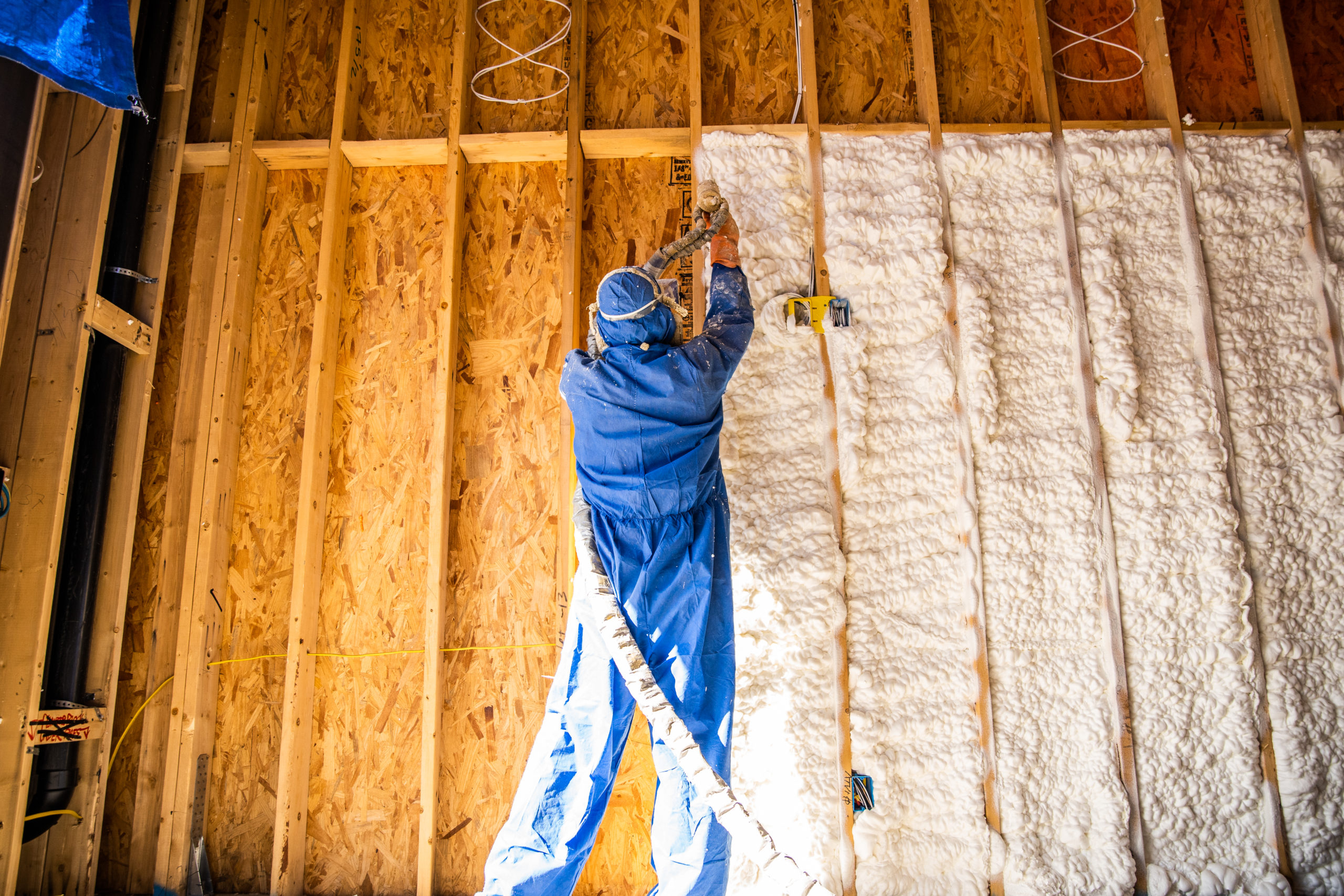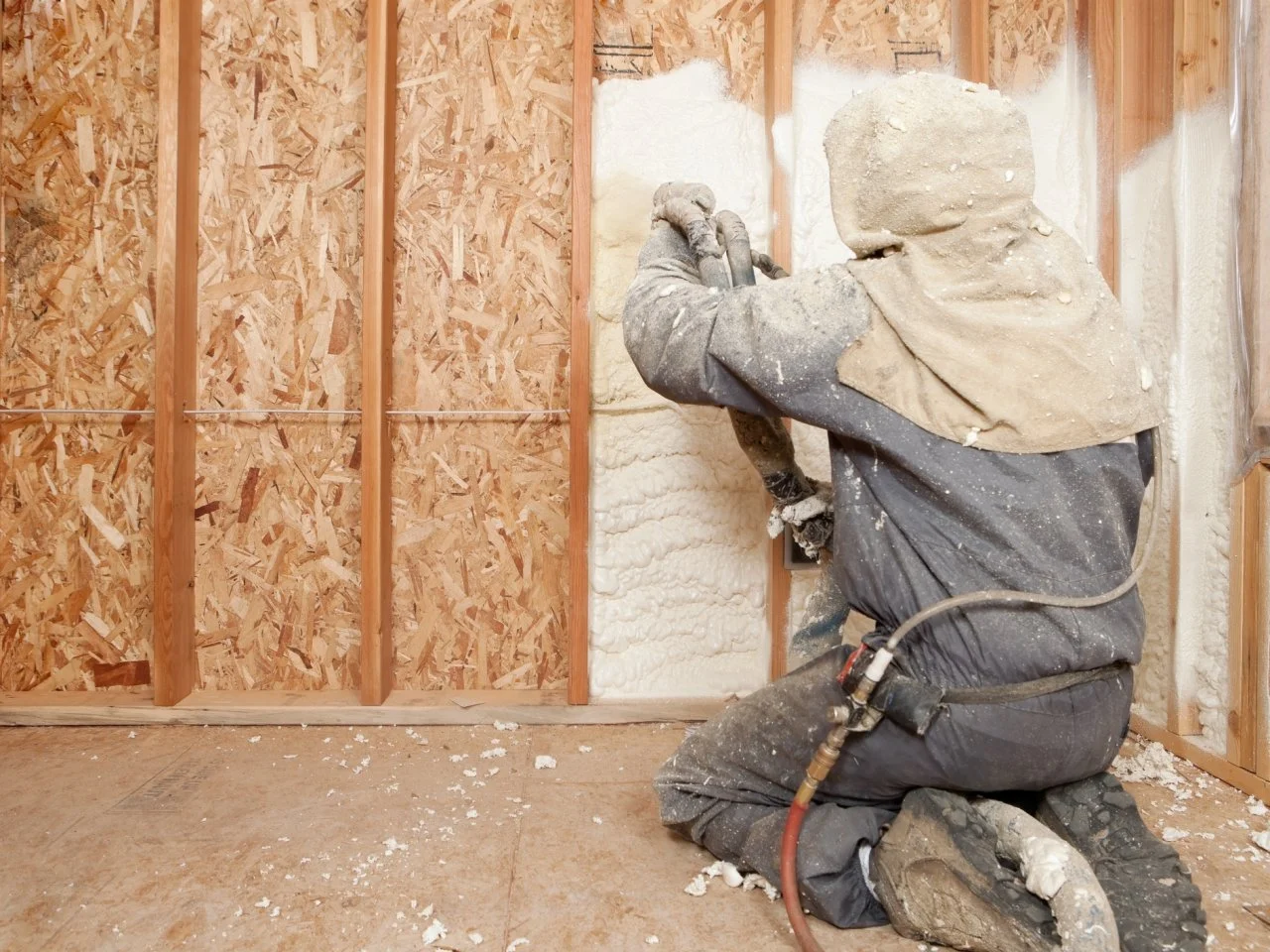Spray Foam: The Ultimate Solution for Air Sealing and Insulation
Spray foam insulation has actually emerged as a leading service for effective air securing and thermal insulation, providing an one-of-a-kind combination of buildings that establish it besides traditional approaches. Its capability to expand and fill up gaps makes it specifically reliable in preventing air leakage, which can substantially influence power effectiveness. Understanding the full extent of its benefits, setup procedures, and contrasts with other insulation kinds is essential for making notified decisions. As we check out these aspects, the effects for both new constructions and retrofits end up being progressively considerable. What variables should affect your option?
What Is Spray Foam?
Spray foam is a functional insulation product that combines the principles of air sealing and thermal resistance to improve energy efficiency in buildings. Made up largely of polyurethane or various other similar substances, spray foam is applied as a liquid that broadens upon call with surface areas, developing a strong, continual layer of insulation. This unique residential or commercial property allows it to fill gaps, cracks, and voids that traditional insulation products may ignore, supplying an exceptional air seal.
There are 2 main kinds of spray foam: open-cell and closed-cell. Open-cell spray foam is lighter and a lot more versatile, using exceptional audio absorption and a lower R-value per inch - Spray Foam. In comparison, closed-cell spray foam is denser, supplying a greater R-value, moisture resistance, and added structural integrity to developing elements
The application process commonly entails specific tools, making certain a smooth application that sticks to various substratums, consisting of wood, steel, and concrete. This adaptability makes spray foam ideal for both new building and constructions and retrofitting existing structures. Its ability to create a closed obstacle dramatically contributes to minimizing power consumption and enhancing indoor air high quality, therefore making it a favored option amongst building contractors and home owners alike.
Advantages of Spray Foam Insulation
One of one of the most substantial advantages of spray foam insulation is its outstanding capacity to develop a constant air obstacle, which successfully decreases energy loss. Unlike standard insulation materials, spray foam broadens to fill spaces and cracks, ensuring that air leakage is substantially lowered. This characteristic not just boosts energy effectiveness however likewise brings about decrease utility costs gradually.
Additionally, spray foam insulation provides premium thermal resistance, adding to a more steady interior environment. Its high R-value per inch permits reliable insulation in constrained rooms, making it excellent for attics, wall surfaces, and crawl rooms. Furthermore, the moisture-resistant residential or commercial properties of spray foam help stop mold and mildew and mold growth, advertising healthier living conditions.
An additional crucial advantage of spray foam insulation is its sound-dampening qualities (Spray Foam). It effectively reduces noise transmission between rooms, developing a quieter and much more comfy home setting. The toughness of spray foam also attracts attention, as it does not sag or clear up over time, preserving its performance throughout its life expectancy
Just How Spray Foam Works
Understanding exactly how spray foam insulation functions is necessary for appreciating its efficiency in air sealing and thermal resistance. Spray foam insulation consists of two main components: isocyanate and polyol material. When these components are blended, they undergo a chain reaction that creates the material to increase quickly, producing a dense foam that fills up gaps, cavities, and fractures.
As the foam increases, it adheres to surfaces, developing a closed seal that significantly lowers air seepage. This characteristic makes spray foam insulation extremely effective at stopping drafts and wetness penetration, which can lead to power loss and damage in time. Furthermore, the closed-cell version of spray foam provides premium thermal resistance due to its stiff structure, properly decreasing warmth transfer.
The special buildings of spray foam enable it to satisfy irregular surfaces, making sure extensive coverage and a seamless barrier. Because of this, spray foam insulation not just improves energy effectiveness yet additionally adds to improved indoor air high quality by decreasing the buildup of toxins and allergens. Inevitably, comprehending the technicians behind spray foam emphasizes its duty as a premium selection for insulation and air sealing in both residential and business applications.
Installation Process Review

Before installation, the room needs to be properly cleaned up and prepped, ensuring that surfaces are without dampness, dust, and particles. Since contaminants can compromise attachment and general efficiency, this action is crucial. Once the area is prepared, the application entails mixing the 2 parts of the spray foam, which increases upon get in touch with and fills gaps successfully.
Educated experts must conduct the setup, using specialized equipment to make sure consistent insurance coverage and optimal density. Safety and security safety measures, consisting of putting on safety equipment and guaranteeing proper ventilation, are vital during this process. After application, the foam content normally treatments swiftly, forming a solid obstacle that boosts energy efficiency.
Contrasting Spray Foam to Traditional Insulation
When evaluating insulation choices, spray foam insulation stands out in comparison to standard materials such as fiberglass and cellulose. Unlike fiberglass and cellulose, which can allow air infiltration, spray foam increases upon application, filling up voids and crevices to create an impermeable seal.
Additionally, spray foam gives a greater R-value per inch than conventional insulation types, supplying even more effective thermal resistance in a thinner profile. This characteristic is especially valuable precede with minimal dental caries depth. Furthermore, spray foam is resistant to moisture and mold development, which can be a substantial interest in cellulose and fiberglass, particularly in damp environments.
Nonetheless, Learn More Here spray foam insulation typically carries a greater upfront cost than its conventional equivalents. Home owners should weigh this preliminary investment against long-term power savings and efficiency benefits. Inevitably, while both insulation kinds serve their objective, spray foam arises as a more advanced service for modern-day insulation needs, especially in terms of air securing and thermal efficiency.

Verdict
In summary, spray foam insulation stands for a very effective solution for attaining ideal air sealing and thermal resistance. Its distinct homes, consisting of wetness resistance and audio dampening, make it appropriate for various applications in both new constructions and retrofitting tasks (Spray Foam). The preliminary expenses may be higher compared to conventional insulation materials, the long-lasting advantages, such as substantial energy savings and enhanced interior air quality, validate the financial investment and emphasize its value in modern building methods.
Spray foam insulation has actually arised as a leading option for efficient air sealing and thermal insulation, offering a distinct mix of properties that establish it apart from conventional techniques.Spray foam is a versatile insulation product that incorporates the concepts of air sealing and thermal resistance to boost power efficiency in structures.When reviewing insulation alternatives, spray foam insulation stands out in contrast her latest blog to traditional materials such as fiberglass and cellulose. Eventually, while both insulation types serve their purpose, spray foam arises as an extra sophisticated service for contemporary insulation requirements, specifically in terms of air securing and thermal performance.
In recap, spray foam insulation stands for an extremely reliable option for attaining optimum air securing and thermal resistance.
Comments on “Leading Applications of Spray Foam for Residential and Commercial Properties”